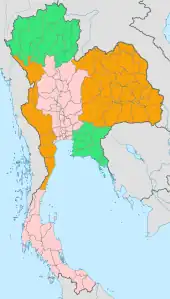Northern Region
ภาคเหนือ | |
|---|---|
   .jpg.webp)  From upper-left to lower-right: Doi Inthanon, Doi Pha Hom Pok, Wat Phra That Doi Suthep, Fourth Thai–Lao Friendship Bridge and Phu Chi Fa | |
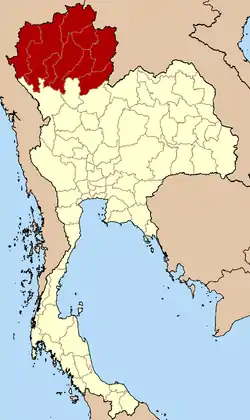 Northern Region in Thailand | |
| Largest city | Chiang Mai |
| Provinces | |
| Area | |
| • Total | 96,077 km2 (37,096 sq mi) |
| Population (2019)[2] | |
| • Total | 6,350,499 |
| • Density | 66/km2 (170/sq mi) |
| Demonym | Khon Muang |
| GDP | |
| • Total | US$41.9 billion (2019) |
| Time zone | UTC+07:00 (ICT) |
| Language | Thai • Northern Thai • Lolo-Burmese • Karenic • • Mienic • Palaungic • Southwestern Mandarin etc. |
Northern Thailand, or more specifically Lanna, is geographically characterised by several mountain ranges, which continue from the Shan Hills in bordering Myanmar to Laos, and the river valleys which cut through them. Though like most of Thailand, it has a tropical savanna climate, its relatively high elevation and latitude contribute to more pronounced seasonal temperature variation, with cooler winters than the other regions.
Historically, northern Thailand has been linked to the Hariphunchai Kingdom, which emerged as a powerful state in the region in the 7th century. This kingdom was related to the Dvaravati that existed from the 6th to 11th centuries. The Hariphunchai culture later influenced the development of the Lanna Kingdom, which emerged in the 13th century and lasted until the 18th century.[4][5]
Geography
North Thailand is bound by the Salween River in the west and the Mekong in the east. The basins of rivers Ping, Wang, Yom, and Nan, all tributaries of the Chao Phraya River, in the central part run from north to south and are mostly very wide. The basins cut across the mountains of two great ranges, the Thanon Range in the western part and the Phi Pan Nam in the eastern. Their elevations are generally moderate, a little above 2,000 metres (6,562 ft) for the highest summits. Although formerly forested, many of these mountains are now denuded.[6]
Parallel mountain ranges extend from the Daen Lao Range (ทิวเขาแดนลาว), in the southern region of the Shan Hills, in a north–south direction, the Dawna Range (ทิวเขาดอยมอนกุจู) forming the western border of Thailand between Mae Hong Son and the Salween River.[7] To the east the Thanon Thong Chai Range (เทือกเขาถนนธงชัย), the Khun Tan Range (ทิวเขาขุนตาน), the Phi Pan Nam Range (ทิวเขาผีปันน้ำ), as well as the western part of the Luang Prabang Range (ทิวเขาหลวงพระบาง), form the natural region of the Thai highlands together with the former.[8]
These high mountains are incised by steep river valleys and upland areas that border the central plain. A series of rivers, including the Nan, Ping, Wang, Yom, and Nan, flow southwards through mountain valleys and join to form the Chao Phraya in Nakhon Sawan Province in the central region. Sirikit Dam is on the Nan River in Uttaradit Province. The northeastern part is drained by rivers flowing into the Mekong basin, like the Kok and Ing.
The four-region system includes the northern parts of the central plain as well as some mountainous areas bordering the western and the northeastern limits. The total forest area is 90,228 km2 (34,837 sq mi) or 52.5 percent of this four-region area.[1]


National parks
Within the northern region there are some sixty national parks. Chiang Mai Province has nine national parks of which Doi Inthanon National Park with the country's highest mountain and Op Luang National Park have a scenic river canyon, waterfalls, and caves. Doi Khun Tan National Park, which is located midway between the two provincial capitals of province Lampang and Lamphun, is best known for Thailand's longest railroad tunnel, which is 1,352 metres (4,436 ft) long. Doi Phu Kha National Park in province Nan is northern Thailand's largest national park.
Regional classification of northern Thailand
The northern region, as defined by the National Geographical Committee in 1978, consists of nine provinces. Geographically the division, in conformance with the six-region system, includes most of the mountainous natural region of the Thai highlands.
In the four-region classification system, northern Thailand gains the eight upper-central-region provinces: Kamphaeng Phet, Nakhon Sawan, Phetchabun, Phichit, Phitsanulok, Sukhothai, Uthai Thani and Tak, bringing the total to 17 provinces.
In 2019 it is common to subdivide the northern region into: nine provinces of the upper northern region and eight provinces of the lower northern region. All websites of these eight provinces state: "located in the lower northern region".
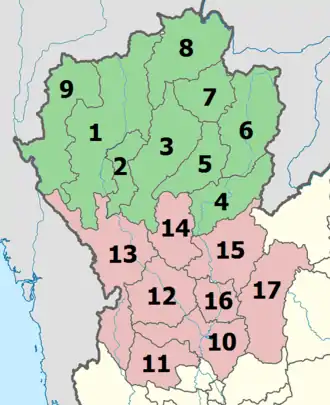
| Flag | Seal | Province | Capital | DOPA | Population | Area (km2) | Density | ISO | |
|---|---|---|---|---|---|---|---|---|---|
 |
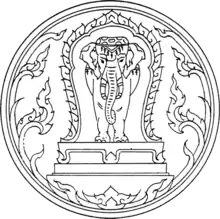 |
1 | Chiang Mai | Chiang Mai | 14 | 1,779,254 | 22,135 | 79 | TH-50 |
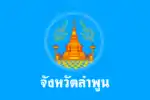 |
 |
2 | Lamphun | Lamphun | 54 | 405,075 | 4,478 | 92 | TH-51 |
 |
 |
3 | Lampang | Lampang | 53 | 738,316 | 12,488 | 59 | TH-52 |
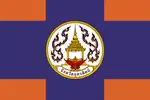 |
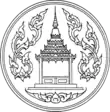 |
4 | Uttaradit | Uttaradit | 75 | 453,103 | 7,906 | 58 | TH-53 |
 |
.svg.png.webp) |
5 | Phrae | Phrae | 41 | 441,726 | 6,483 | 68 | TH-54 |
 |
 |
6 | Nan | Nan | 26 | 478,227 | 12,130 | 40 | TH-55 |
 |
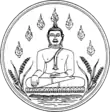 |
7 | Phayao | Phayao | 34 | 472,356 | 6,189 | 76 | TH-56 |
 |
 |
8 | Chiang Rai | Chiang Rai | 13 | 1,298,304 | 11,503 | 113 | TH-57 |
 |
 |
9 | Mae Hong Son | Mae Hong Son | 45 | 284,138 | 12,765 | 23 | TH-58 |
 |
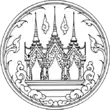 |
10 | Nakhon Sawan | Nakhon Sawan | 23 | 1,059,887 | 9,526 | 111 | TH-60 |
 |
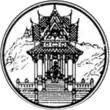 |
11 | Uthai Thani | Uthai Thani | 76 | 328,618 | 6,647 | 50 | TH-61 |
 |
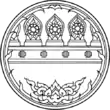 |
12 | Kamphaeng Phet | Kamphaeng Phet | 5 | 725,867 | 8,5123 | 86 | TH-62 |
 |
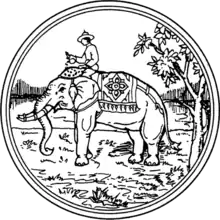 |
13 | Tak | Tak | 17 | 665,620 | 17,303 | 39 | TH-63 |
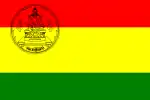 |
.svg.png.webp) |
14 | Sukhothai | Sukhothai | 66 | 595,072 | 6,671 | 89 | TH-64 |
 |
 |
15 | Phitsanulok | Phitsanulok | 38 | 865,247 | 10,589 | 82 | TH-65 |
 |
 |
16 | Phichit | Phichit | 37 | 536,311 | 4,319 | 124 | TH-66 |
 |
 |
17 | Phetchabun | Phetchabun | 40 | 992,451 | 12,340 | 80 | TH-67 |
Economy
For FY 2018, Northern Thailand Region had a combined economic output of 1,266 trillion baht (US$40.8 billion), or 7.7 percent of Thailand's GDP. Lamphun province had an economic output of 84.395 billion baht (US$2.7 billion). This equates to a GPP per capita of 211,489 baht (US$6,822), half more than for Chiang Mai province, next in the ranking and double than for Lampang province, which is third in the ranking.[9]
| Rank | Province | GPP (million baht) |
Population (x 1000) |
GPP per capita (baht) |
|---|---|---|---|---|
| 1 | Lamphun | 84,395 | 399 | 211,489 |
| 2 | Chiang Mai | 247,831 | 1,805 | 137,316 |
| 3 | Lampang | 71,950 | 714 | 100,709 |
| 4 | Phayao | 37,298 | 383 | 97,306 |
| 5 | Chiang Rai | 110,815 | 1,156 | 95,895 |
| 6 | Uttaradit | 39,190 | 416 | 94,260 |
| 7 | Phrae | 30,403 | 388 | 78,276 |
| 8 | Nan | 33,674 | 445 | 75,676 |
| 9 | Mae Hong Son | 13,728 | 235 | 58,370 |
| Upper provinces | 669,284 | 5,941 | 112,655 |
Kamphaeng Phet province had an economic output of 117.705 billion baht (US$3.8 billion). This amounts to a GPP per capita of 150,783 baht (US$4,864), half more than for Tak province, which is fifth in the ranking.
| Rank | Province | GPP (million baht) |
Population (x 1000) |
GPP per capita (baht) |
|---|---|---|---|---|
| 1 | Kamphaeng Phet | 117,705 | 781 | 150,783 |
| 2 | Nakhon Sawan | 116,147 | 938 | 123,865 |
| 3 | Phitsanulok | 100,286 | 896 | 111,872 |
| 4 | Uthai Thani | 29,879 | 281 | 106,369 |
| 5 | Tak | 52,720 | 532 | 99,026 |
| 6 | Phichit | 48,347 | 518 | 93,265 |
| 7 | Phetchabun | 81,909 | 921 | 88,971 |
| 8 | Sukhothai | 50,384 | 613 | 82,147 |
| Lower provinces | 597,377 | 5,480 | 109,010 |
Languages
Central Thai is the sole official language in Thailand. However, in the six-region classification system, it is the second largest native language in Northern Thailand, amounting to roughly two hundred thousand people, found in the lower part of Uttaradit Province. Central Thai spoken in southern regions of Northern Thailand in the four-region classification system comprise a group of dialects classified as Ne (Thai: เหน่อ). Because there are no significant Thai Chinese communities in Northern Thailand, the Krung Thep accent (prestige dialect) is not commonly found in Northern Thailand.
The main language is Northern Thai, which is a southwestern Tai language spoken in the 9 changwat of Northern Thailand. It is spoken by roughly six million people. There are also various hill tribe languages such as Lolo-Burmese, Karenic, Mienic, Mienic, Palaungic, Southwestern Mandarin.
Notes
- There was no population survey in 2020 due to COVID-19.
- Ethnic communities in northern Thailand
 Kayan woman
Kayan woman Hmong women
Hmong women.jpg.webp) River woman
River woman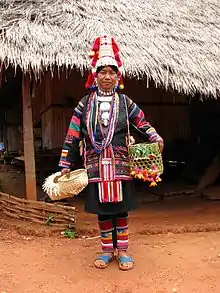 Akha woman
Akha woman
See also
References
- 1 2 "ตารางที่ 2 พี้นที่ป่าไม้ แยกรายจังหวัด พ.ศ.2562" [Table 2 Forest area Separate province year 2019]. Royal Forest Department (in Thai). 2019. Retrieved 6 April 2021, information, Forest statistics Year 2019, Thailand boundary from Department of Provincial Administration in 2013
{{cite web}}: CS1 maint: postscript (link) - ↑ รายงานสถิติจำนวนประชากรและบ้านประจำปี พ.ส.2562 [Statistics, population and house statistics for the year 2019]. Registration Office Department of the Interior, Ministry of the Interior. stat.bora.dopa.go.th (in Thai). 31 December 2019. Retrieved 26 February 2020.
- ↑ "Gross Regional and Provincial Product, 2019 Edition". <>. Office of the National Economic and Social Development Council (NESDC). July 2019. ISSN 1686-0799. Retrieved 22 January 2020.
- ↑ Tan, Heidi (2012), "The Many Streams of Buddhist Art in Thailand", Enlightened Ways: The Many Streams of Buddhist Art in Thailand, Asian Art Museum of San Francisco, p. 13
- ↑ Smith, John (2019). State, Community, and Ethnicity in Early Modern Thailand, 1351-1767 (PDF) (Ph.D. dissertation). University of Michigan. p. 40. Retrieved 2023-04-08.
- ↑ Forest data: Thailand Deforestation Rates
- ↑ Northern Thailand Archived 2012-01-28 at the Wayback Machine
- ↑ ดร.กระมล ทองธรรมชาติ และคณะ, สังคมศึกษา ศาสนาและวัฒนธรรม ม.1, สำนักพิมพ์ อักษรเจริญทัศน์ อจท. จำกัด, 2548, หน้า 24-25
- ↑ Phitsanulok Provincial Statistical Report 2562-2019: Economic Statistics - National Accounts. Phitsanulok Provincial Statistical Office (Report). National Statistical Office (NSO). 2020. pp. 94–95. ISSN 1905-8314.
External links
 North (Thailand) travel guide from Wikivoyage
North (Thailand) travel guide from Wikivoyage
